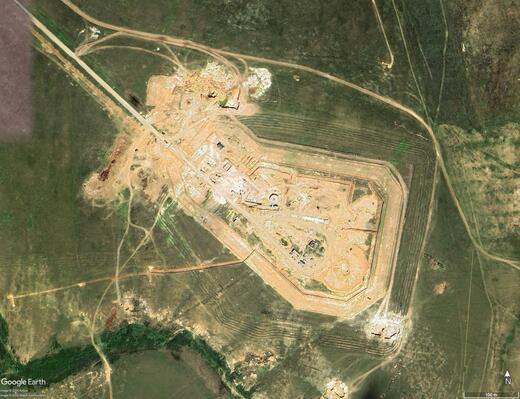 Starting in late 2022, right when it began the deployment of the second regiment of Avangard missiles, Russia started an upgrade of missile positions. By late 2024, all positions of 368th missile regiment had been upgraded. All include a characteristic round above-ground structure that appears to be the guard quarters (Danwatch.dk found very detailed plans of the buildings).
Starting in late 2022, right when it began the deployment of the second regiment of Avangard missiles, Russia started an upgrade of missile positions. By late 2024, all positions of 368th missile regiment had been upgraded. All include a characteristic round above-ground structure that appears to be the guard quarters (Danwatch.dk found very detailed plans of the buildings).
What's interesting, the Avangard positions of the 621st regiment, which started receiving missiles in 2019 don't have buildings like that. There is a (round) guard house there too, but it appears to be smaller.
It appears that the deployment of Avangard has been completed. My understanding is that the deployment rate is two a year - it took three years (2019-2021) to complete the first regiment. In the three following years, 2022-2024, Russia probably completed the second regiment. The original plan apparently was to deploy 12 total. The FAS team also has 12 deployed Avangards.
(The position on the image and in the DanWatch story is at 51.097721 60.085756)
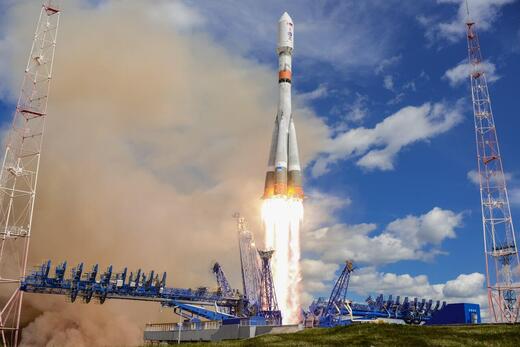 The Air and Space Forces conducted a successful launch of a Soyuz-2.1b rocket from the launch pad No. 4 of the launch complex No. 43 of the Plesetsk space launch site. The launch took place at 11:36 MSK (08:36 UTC) on 23 May 2025. (See also the RIA Novosti video. Note that in the Roscosmos entry, the launch time is listed as 12:00:00.)
The Air and Space Forces conducted a successful launch of a Soyuz-2.1b rocket from the launch pad No. 4 of the launch complex No. 43 of the Plesetsk space launch site. The launch took place at 11:36 MSK (08:36 UTC) on 23 May 2025. (See also the RIA Novosti video. Note that in the Roscosmos entry, the launch time is listed as 12:00:00.)
The satellite, Cosmos-2588, was placed on a near-circular 464x481 km orbit with inclination of 73 degrees. It was registered by NORAD as object 64095 and received the international designation 2025-109A.
The Cosmos-2588 orbital plane is very close to that of US reconnaissance satellite, USA 338. Estimates suggest that Cosmos-2588 can come to within 100 km from each other.
This is not the first time Russia deploys its satellite this way. Cosmos-2542 (and Cosmos-2543) were deployed close to USA 245. Cosmos-2558 was deployed in the orbital plane of USA 326. Cosmos-2576 was placed in the orbital plane of USA 314. The United States also said that Russia tested "counterspace systems" in launches conducted in 2019 and 2022.
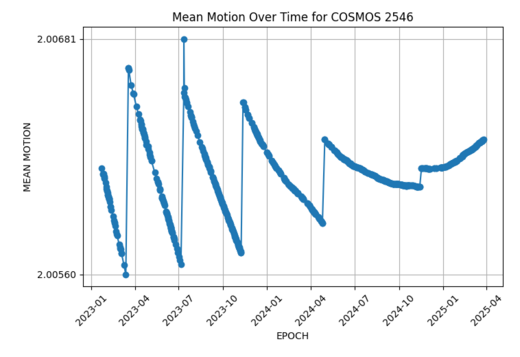 As of March 2025, Russia has conducted six launches of the new-generation early-warning satellites, known as Tundra (the system is known as EKS/Kupol). In January 2024 four Tundra satellites were in operation.
As of March 2025, Russia has conducted six launches of the new-generation early-warning satellites, known as Tundra (the system is known as EKS/Kupol). In January 2024 four Tundra satellites were in operation.
A March 2025 check suggests that Cosmos-2546 ended its operations in October-November 2024. This leaves three operational Tundra satellites - Cosmos-2541, Cosmos-2552, and Cosmos-2563.
The satellites, which are deployed on highly-elliptical orbits, are believed to have true look-down capability (see this post, for example). Three satellites may still provide coverage of potential missile launch areas in the northern hemisphere, but this coverage may not be very reliable. In its full configuration, the system is supposed to include ten satellites (original MoD post).
The fact that the space segment of the early-warning system is incomplete should not be a cause for alarm. Russia didn't have any early-warning satellites in space for a number of years after 2015, when all old-generation satellites completed their operations. The discussion in that post shows that the role of the space segment in providing early-warning of a missile attack is not nearly as important in Russia as it is in the United States. For more details, see my old Science & Global Security article.
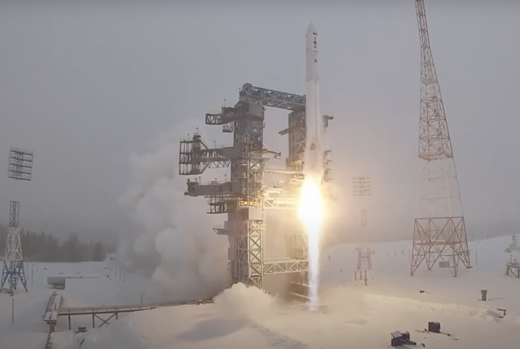 The Air and Space Forces conducted a successful launch of an Angara 1.2 rocket from the launch pad No. 1 of the launch complex No. 35 of the Plesetsk space launch site. The launch took place at 13:49:26 MSK (10:49:26 UTC) on 16 March 2025. The rocket and its AM boost stage delivered into orbit three satellites, designated Cosmos-2585, Cosmos-2586, and Cosmos-2587.
The Air and Space Forces conducted a successful launch of an Angara 1.2 rocket from the launch pad No. 1 of the launch complex No. 35 of the Plesetsk space launch site. The launch took place at 13:49:26 MSK (10:49:26 UTC) on 16 March 2025. The rocket and its AM boost stage delivered into orbit three satellites, designated Cosmos-2585, Cosmos-2586, and Cosmos-2587.
The satellites received international designations 2025-054A, 2025-054B, and 2025-054C and NORAD numbers 63288, 63289, and 63290 respectively. After maneuvers the satellites were deployed in orbits with altitude of almost 1500 km separated by 120 degrees.
The satellites are believed to be Rodnik communication satellites. Previous launch of three Rodnik satellites took place in November 2018.
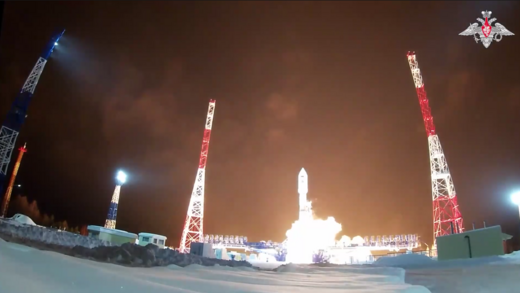 The Air and Space Forces conducted a successful launch of a Soyuz-2.1b rocket from the launch pad No. 3 of the launch complex No. 43 of the Plesetsk space launch site. The launch took place at 01:22:17 MSK on 3 March 2025 (22:22:17, 2 March 2025 UTC). The satellite that the rocket and its Fregat boost stage delivered into orbit is a Glonass-K2 navigation satellite No. 14L.
The Air and Space Forces conducted a successful launch of a Soyuz-2.1b rocket from the launch pad No. 3 of the launch complex No. 43 of the Plesetsk space launch site. The launch took place at 01:22:17 MSK on 3 March 2025 (22:22:17, 2 March 2025 UTC). The satellite that the rocket and its Fregat boost stage delivered into orbit is a Glonass-K2 navigation satellite No. 14L.
The satellite was designated Cosmos-2584. It received international designation 2025-042A and was registered by NORAD as object 63130.
This is the second satellite of the Glonass-K2 type. The first launch of a satellite of this type took place in August 2023.
According to Alexandr Leonov, the General Director and General Designer of NPO Mashinosroyeniya (NPO Mash, the old Chelomey design bureau), quoted by TASS, the service life of UR-100NUTTH/SS-19 missiles is still being extended. The missile has been in service since 1979 (Leonov said 49 years, but that would be UR-100N, which was indeed began service in 1975.)
The last public report about service life extension for UR-100NUTTH was in 2014 - at that time the service life was extended to 36 years. Another report, in 2020, mentioned that there was another extension in 2019, but it was the same 36 years, so it wasn't really a change from 2014. The same 2020 report mentioned a life extension at the time, but that request was about UR-100NUTTH missiles used as Avangard launchers. These about 30 missiles, received from Ukraine in the early 20000s, are different in that they have not been fueled and therefore begin their service just now.
At the time the START treaty expired in 2009, Russia had 41 deployed UR-100NUTTH in Tatishchevo and 29 in Kozelsk (these are the last official data). Both divisions, however, were bing converted to Topol-M and Yars. It appears that all old missile have been removed from Kozelsk, but it's possible that some, maybe 10 or 20, are still deployed in Tatishchevo. It's possible that while the missiles are still in silos, their warheads have been removed - a similar thing was done back in the 1970s with their predecessor, UR-100, when that missile reached the end of its service life.
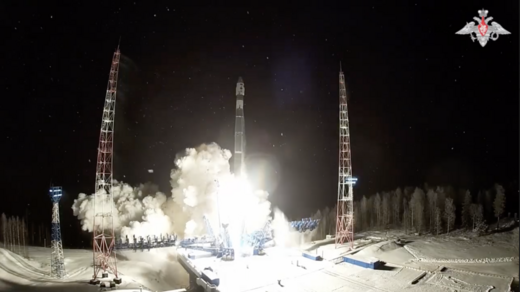 The Air and Space Forces conducted a successful launch of a Soyuz-2.1v rocket from the launch pad No. 4 of the launch complex No. 43 of the Plesetsk space launch site. The launch took place at 06:59 MSK (03:59 UTC) on 5 February 2025. The rocket and its Volga boost stage delivered into orbit three satellites, designated Cosmos-2581, Cosmos-2582, and Cosmos-2583.
The Air and Space Forces conducted a successful launch of a Soyuz-2.1v rocket from the launch pad No. 4 of the launch complex No. 43 of the Plesetsk space launch site. The launch took place at 06:59 MSK (03:59 UTC) on 5 February 2025. The rocket and its Volga boost stage delivered into orbit three satellites, designated Cosmos-2581, Cosmos-2582, and Cosmos-2583.
The satellites received international designations 2025-026A, 2025-026B, and 2025-026C and NORAD numbers 62902, 62903, and 62904 respectively. They were deployed on an approximately circular orbit with altitude of almost 600 km and inclination of 81.99 degrees.
The satellites mission is not immediately clear. After deployment satellites conducted several orbit corrections.
UPDATE: On 11 March 2025, Cosmos-2581 and Cosmos-2582 conducted a close approach, estimated to be tens of meters. Later, NORAD registered an additional object associated with the launch, 2025-026F/63330. It may have separated from Cosmos-2583 on 18 March 2025 at about 20:15 UTC.
Knyaz Pozharsky submarine of the Project 955A/Borey-A class will be accepted for service in June 2025. The construction of the submarine began in 2016. It was rolled out of the construction hall in February 2024. It was said to be undergoing state trials in October 2024, but it is yet to conduct a launch of its Bulava missile.
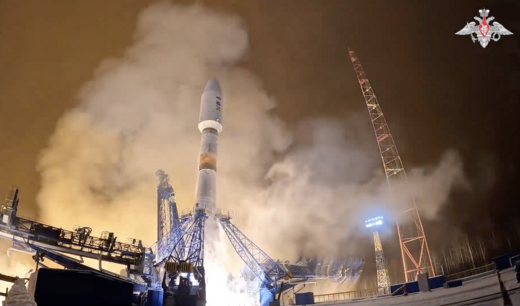 On 4 December 2024, at 21:03:13 MSK (18:03:13 UTC) crews of the Air and Space Forces conducted a successful launch of a Soyuz-2.1b launcher from the Plesetsk test site. (Note that the time of launch in the ministry of defense announcement, 20:59 MSK, appears to be incorrect.)
On 4 December 2024, at 21:03:13 MSK (18:03:13 UTC) crews of the Air and Space Forces conducted a successful launch of a Soyuz-2.1b launcher from the Plesetsk test site. (Note that the time of launch in the ministry of defense announcement, 20:59 MSK, appears to be incorrect.)
The satellite delivered into orbit was designated Cosmos-2580. It received international designation 2024-230A and registered by NORAD as object 62216.
Cosmos-2580 is believed to be a Lotos-S1 electronic reconnaissance satellite of the Liana system.
Previous Lotos-S1 satellite, Cosmos-2570, was launched in October 2023.
 On 31 October 2024, at 10:51:31 MSK (07:51:31 UTC) crews of the Air and Space Forces conducted a successful launch of a Soyuz 2.1a launcher from the launch pad No. 4 of the launch complex No. 43 of the Plesetsk test site.
On 31 October 2024, at 10:51:31 MSK (07:51:31 UTC) crews of the Air and Space Forces conducted a successful launch of a Soyuz 2.1a launcher from the launch pad No. 4 of the launch complex No. 43 of the Plesetsk test site.
According to an official statement, the satellite is designated Cosmos-2579. It was registered as object 61730 by NORAD and received international designation 2024-197A.
The satellite delivered into orbit is believed to be a digital cartographic satellite 14F148 Bars-M. This is the sixth launch of satellites of the Bars-M type. The previous launch took place in December 2023.
